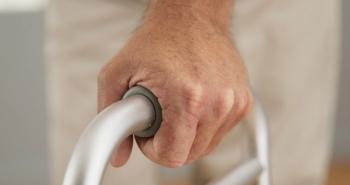
Psychological Burden of Alopecia Significantly Impacts Quality of Life
Key Takeaways
- Alopecia affects QOL, with non-scarring alopecia patients experiencing higher anxiety and depressive symptoms than those with scarring alopecia.
- Younger patients and women report greater psychological distress, highlighting the importance of hair for self-esteem and identity.
Hair loss disorder can lead to a significant psychological and emotional burden that warrants more attention, new research suggests.
“Hair loss extends beyond cosmetic concerns, frequently resulting in profound psychological and psychosocial consequences, such as reduced self-confidence and negative social interactions,” the authors wrote. “Quality of life (QOL) indicates how people perceive their physical, mental, and social health in relation to their disease. While many studies investigate the impact of hair loss on QOL, differences between scarring and non-scarring alopecia remain underexplored.”
The exploratory cross-sectional study of 510 patients was conducted at the Charité-Universitätsmedizin Berlin’s dermatology outpatient clinic and aimed to comprehensively assess QOL impairment, comparing patients with scarring and non-scarring alopecia. Researchers utilized the Dermatology Life Quality Index (DLQI) and the Patient-Reported Outcomes Measurement Information System (PROMIS) questionnaires to determine the QOL impact of alopecia.
The study showed that hair loss disorders generally lead to impaired QOL, with psychological well-being being the most affected domain. The mean (SD) DLQI score for all participants was 7.86 (6.59), which represents a moderate impact on QOL. This finding was consistent across both nonscarring (9.32 [7.17)] and scarring alopecia (6.06 [5.27]).
Mental QOL impairments were common in both alopecia types due to the burden of anxiety and emotional impact. However, patients with nonscarring alopecia were found to be more affected in their psychological well-being compared with those with scarring alopecia. The PROMIS analysis indicated that patients with nonscarring alopecia exhibited significantly higher levels of anxiety (T-score, 59.11 [9.53] vs 55.38 [8.05]) and reported mild depressive symptoms (T-score, 55.44 [11.08]).
“A notable finding is the predominance of mental QOL impairments, evident in both alopecia types through the burden of anxiety and emotional impact, with a more pronounced impact in non-scarring alopecia,” the authors wrote. “Furthermore, depressive symptoms were particularly prevalent in this group, reinforcing the greater psychological burden associated with non-scarring forms of the disease.”
Conversely, physical functioning was reported as more severely compromised in scarring alopecia, which researchers attribute to inherent symptoms like pruritus, burning, and dysesthesia.
Further subgroup analysis revealed significant demographic differences in impairment. Younger and middle-aged patients reported higher DLQI scores and higher anxiety levels than older adults in both types of alopecia. Researchers suggest this may be because, particularly for younger generations, hair holds important aesthetic and identity value that affects self-esteem.
Gender also played a significant role, with women reporting higher anxiety levels than men overall. This effect was most pronounced in women with non-scarring alopecia, who reported heightened anxiety levels and greater difficulties in personal relationships. This is a link that past studies have not definitively identified,2 the authors noted.
“The interplay of gender and age with alopecia is complex, possibly influenced by cultural context,” the authors explained.1 “Particularly for the younger generation and women, hair holds important aesthetic and identity value, affecting self-esteem. Older individuals may adapt more readily to hair loss or embrace accessories like wigs.”
The study had limitations, such as using a convenience sample and questionnaires that only reference the past 7 days, but the exploratory study offers crucial initial insights into the burden of different forms of alopecia, the authors concluded. Large-scale evaluations with more diverse samples, validated hair-specific questionnaires, and longitudinal designs are needed to fully capture the extent of alopecia’s impact on quality of life.
“Our results suggest that the psychological impact of alopecia can be notable and therefore warrants increased attention,” the authors concluded. “Our study challenges the perception of hair loss disorders solely as cosmetic or lifestyle diseases by demonstrating their potential impact on QOL, particularly on an emotional level. These findings suggest that psychological support could potentially be beneficial as part of hair loss management strategies, although further research is needed to confirm this.”
References
1. Franz A, Constantinou A, Engelhardt G, et al. Quality of life in patients with scarring and non-scarring alopecia: an exploratory cross-sectional study. J Dtsch Dermatol Ges. Published online October 14, 2025. doi:10.1111/ddg.15905
2. Rencz F, Gulácsi L, Péntek M, Wikonkál N, Baji P, Brodszky V. Alopecia areata and health-related quality of life: a systematic review and meta-analysis. Br J Dermatol. 2016;175(3):561-571. doi:10.1111/bjd.14497
Newsletter
Stay ahead of policy, cost, and value—subscribe to AJMC for expert insights at the intersection of clinical care and health economics.













































